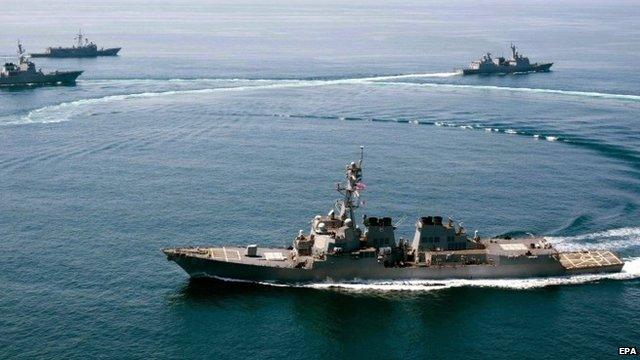China says US warship's Spratly islands passage 'illegal'
- Published
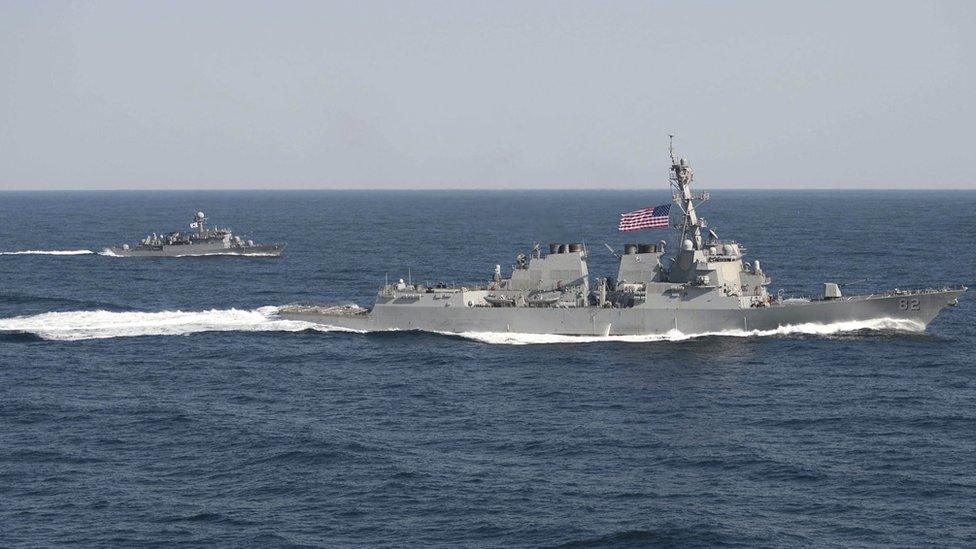
Guided-missile destroyer USS Lassen seen with a South Korean ship in a photo from March
Chinese officials have condemned a US ship's passage near disputed islands in the South China Sea as "illegal" and a threat to their country's sovereignty.
The guided-missile destroyer USS Lassen breached the 12-nautical mile zone China claims around Subi and Mischief reefs in the Spratly archipelago.
The US has confirmed the operation took place, apparently as part of its Freedom of Navigation programme.
The operation is a challenge to China's claims over the artificial islands.
Lu Kang, a spokesman for China's foreign ministry, said Beijing would "resolutely respond to any country's deliberately provocative actions".
He added that the ship had been "tracked and warned" while on the mission to deliberately enter the disputed waters.
The Chinese foreign ministry summoned the US ambassador to protest over the move.
Meanwhile, US Defence Secretary Ash Carter confirmed that the USS Lassen had passed within 12 miles of the islands, during questioning by the Senate Armed Forces Committee.
US Defence Department spokesman Cdr Bill Urban had earlier said that "the United States is conducting routine operations in the South China Sea in accordance with international law".
The move was welcomed by several countries in the East Asia region, including the Philippines and Japan.

China claims most of the South and East China seas. Other countries in South-East Asia have competing claims for the Spratly Islands, Paracel Islands and Scarborough Shoal, which are thought to have resource-rich waters around them.
The reefs, which were submerged, were turned into islands by China by a massive dredging project which began in late 2013.
China says this work is legal and in a meeting with US President Barack Obama last month in Washington, President Xi Jinping said China had "no intention to militarise" the islands.
But Washington believes Beijing is constructing military facilities, designed to reinforce its disputed claim to most of the region - a major shipping zone.

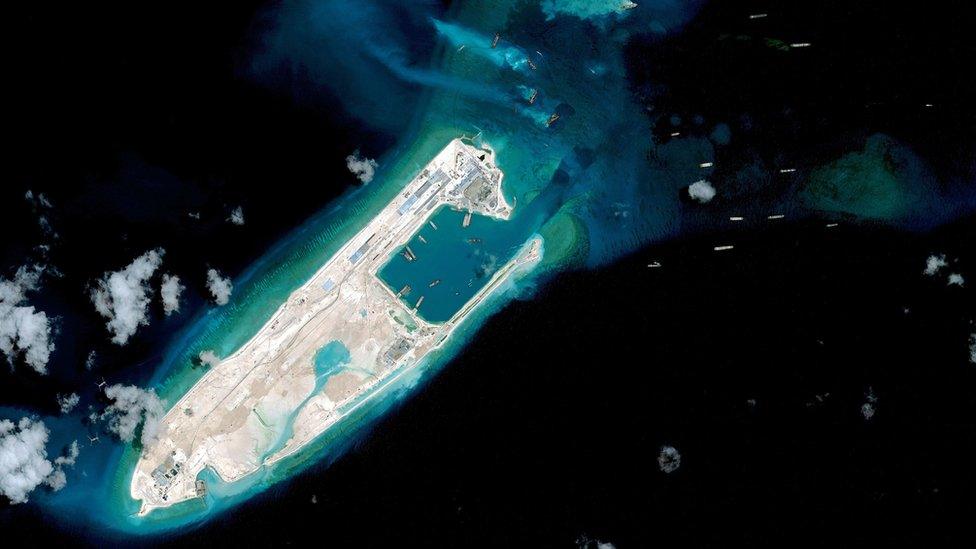
A file photo from April shows what is claimed to be an airstrip under construction on the Fiery Cross Reef in the Spratly Islands
What is Freedom of Navigation?
The US Freedom of Navigation programme challenges what it deems to be "excessive claims" to the world's oceans and airspace.
It was developed to promote international adherence to the UN Convention on the Law of the Sea, even though the US has not formally ratified the treaty.
In 2013 and 2014, the US conducted Freedom of Navigation operations of different kinds against China, Malaysia, the Philippines, Taiwan, and Vietnam - each of whom occupies territory in the South China Sea.

International maritime law allows countries to claim ownership of the 12-nautical mile area surrounding natural islands, but does not allow nations to claim ownership of submerged features that have been raised by human intervention.
A senior US defence official told Reuters news agency the warship began its mission early on Tuesday local time near the reefs and would spend several hours there.
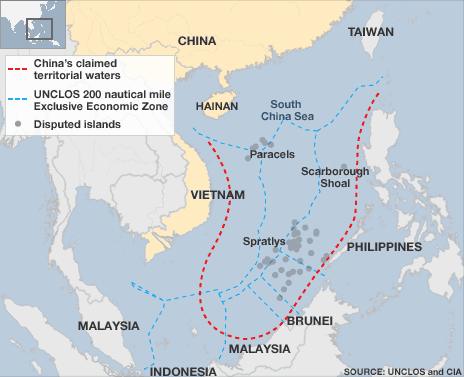
The USS Lassen, a guided-missile destroyer, was expected to be accompanied by a US Navy P-8A surveillance plane and a P-3 surveillance plane, according to the unnamed official, speaking to US media.
Additional patrols could follow in the coming weeks, the official added.

The BBC's Celia Hatton reports: ''This is a political issue and an economic one''
Why build a series of tiny islands in the middle of a vast sea? - Celia Hatton, BBC News, Beijing
China has altered Asia's geography by dredging sand from the sea bottom and piling it on existing reefs to build several new islands.
Vague explanations have been offered to justify this costly exercise. Officially, the islands will be used for rescue operations and environmental projects.
Chinese President Xi Jinping has pledged the islands would not be "militarised".
However, many are sceptical of China's geopolitical aims. In recent years, China has amplified its claims in the South China Sea. Critics fear Beijing will use the islands' airstrips to exert control over the area.
At the same time, the United States is exerting its own influence in Asia, pivoting more of its military and economic attention to the region. The new islands are relatively tiny, but the tensions they could create between Beijing and Washington could have global implications.

USS Lassen
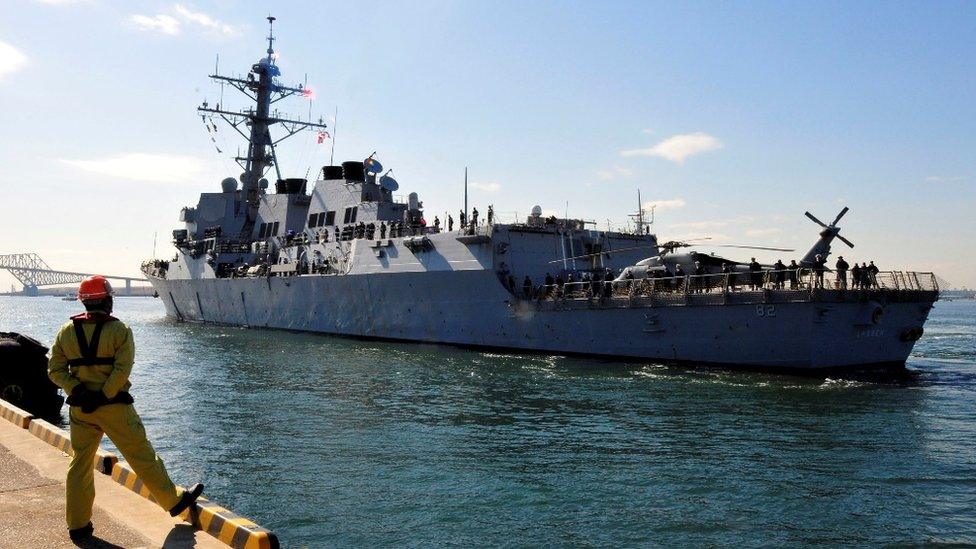
The ship is an Arleigh Burke class missile destroyer, which the US Navy says is among the most powerful destroyers ever built.
It is 155m (509ft) long with a displacement of 9,145 tons (8,300 tonnes) when fully loaded.
Crewed by a staff of about 330.
It carries two Seahawk helicopters and uses the Aegis defence system.
Weapons include Tomahawk missiles, RUM-139 Asroc anti-submarine missiles and surface-to-air missiles.

- Published7 July 2023
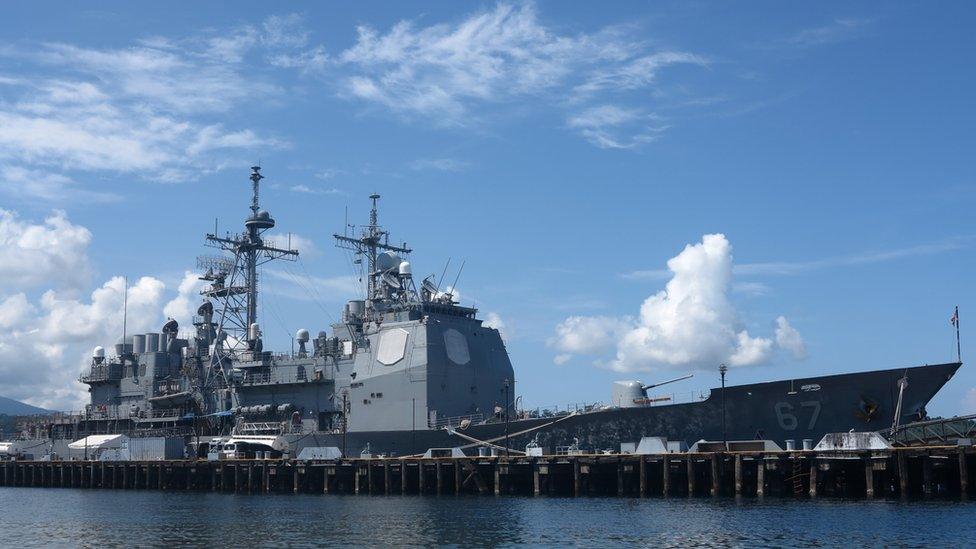
- Published21 June 2015
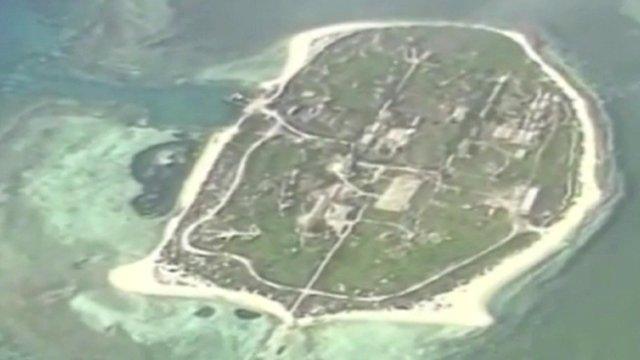
- Published27 October 2015
